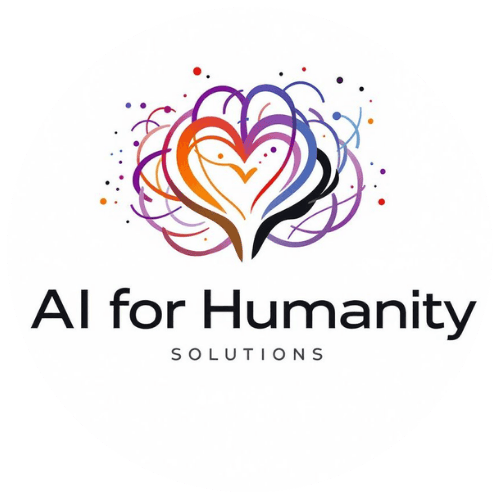

In a strikingly creative presentation titled “How to Train Your Dragon for AI for Humanity,” the metaphor of taming a dragon becomes the lens through which we explore the urgent need to build ethical, transparent, and human-centered AI systems. This is not just a whimsical comparison. Dragons, like advanced AI systems, are immensely powerful. They’re awe-inspiring, intelligent—and if mishandled—dangerous.
So how do we build AI that’s trustworthy and beneficial? We do it like we’d train a dragon: with preparation, respect, continuous learning, and human oversight. Let’s explore what that truly means in today’s digital age.
The Dragon Is Power, Not Evil
The metaphor begins with a crucial realization: dragons, like AI, are not inherently evil. They're powerful creatures whose potential depends on how they are raised and handled. In much the same way, AI technologies are not born with intent. They reflect the data they're trained on and the objectives they're given.
If we build AI without considering ethics, bias, and unintended consequences, we risk unleashing systems that operate outside of our control—whether through automation errors, discriminatory decision-making, or manipulation. That’s the danger of treating AI like a tool without acknowledging its complexity.
Just as a dragon’s power must be understood before it's unleashed, AI must be developed with clarity, oversight, and moral guidance. If not, even well-intentioned tools can evolve into forces we no longer fully understand or control.
Step 1: Preparation—Before You Approach the Beast
No one walks up to a dragon unprepared. Before training begins, you need protective gear, a deep understanding of the creature, and a plan. In AI terms, this means:
- Establishing safety protocolsResponsible AI requires developers to embed principles like explainability, privacy, and fairness from day one.
- Legal and ethical frameworksGovernments and institutions must enforce accountability through laws, standards, and transparency requirements.
- Bias mitigation strategyIf your dataset is flawed or unrepresentative, the model will reflect that. Ensuring diverse, inclusive, and de-biased training data is crucial.
Much like suiting up for battle, these steps prepare teams to handle the raw potential of AI before it's fully activated.
Step 2: The Feeding Ground—Infrastructure and Data
A dragon needs fuel, and so does AI. For AI, that fuel is data and computational power.
Generative AI systems, such as GPT or DALL·E, require vast training data sets and extensive compute infrastructure to perform effectively. But with that comes the responsibility to:
Ensure that data is collected ethically and used legally
Avoid scraping private or copyrighted materials
Protect sensitive information from being leaked or misused
Acknowledge the energy cost and environmental impact of training large models
Just as dragons consume vast resources, so do these models. Understanding this cost—and optimizing for sustainability—is part of being a responsible trainer.
Step 3: Training Isn’t a One-Time Event
You don’t tame a dragon in a day. Training AI models is a long, iterative process. It includes:
Model development – Design the architecture and set goals.
Testing – Evaluate how the model performs in real-world scenarios.
Feedback and fine-tuning – Refine based on errors or unexpected behavior.
Deployment and monitoring – Put the AI into action while watching for anomalies.
The key here is feedback. AI isn’t static—it learns, evolves, and adapts. That means the training doesn’t end once it’s deployed. Human teams must continue observing and iterating, just like a dragon rider constantly adjusts to their companion’s behavior and mood.
Step 4: Addressing Bias—The Dragon’s Temper
Even the best-trained dragon can lose its temper. In AI, this shows up as bias, misinformation, or unfair decisions.
AI models trained on skewed or non-representative data can make deeply harmful mistakes—rejecting job applicants unfairly, misidentifying faces, or spreading false information. To avoid this, we must:
Audit for algorithmic bias regularly
Include ethical oversight and review boards
Test against diverse user profiles and real-world scenarios
Make systems explainable and contestable
Unchecked, bias is one of the most dangerous traits a dragon—or an AI—can possess. If we don’t tame it, we invite distrust, harm, and inequality.
Step 5: The Human Must Stay in the Saddle
The most powerful message in this metaphor is that AI must always remain under human oversight. The dragon may be strong, but it’s the rider—us—who guides its flight path.
In practical terms, this means:
Humans make the final call on high-impact decisions (e.g., healthcare, legal, or financial outcomes)
AI should explain its reasoning in terms people can understand
Responsibility and accountability must stay with the humans and institutions that design, deploy, and profit from the technology
Rather than replacing us, AI should augment our abilities—helping us think more creatively, make better decisions, and tackle challenges previously out of reach.
A Framework for Responsible AI Development
Here’s a simple five-step framework inspired by the dragon metaphor to guide AI development:
| Step | Dragon Metaphor | AI Practice |
|---|---|---|
| 1. Prepare | Read the manual, suit up | Define safety, ethics, legal guardrails |
| 2. Feed Properly | Provide high-quality fuel | Curate clean, inclusive, representative data |
| 3. Train Slowly | Practice, observe, adjust | Test, evaluate, fine-tune, and iterate |
| 4. Manage Temper | Address dangerous tendencies | Detect and reduce algorithmic bias and harmful behavior |
| 5. Stay in Control | Ride the dragon with care | Maintain human oversight, accountability, and moral authority |
The Stakes Are Higher Than Ever
We are entering a critical phase of AI development where choices made today will shape the future of human-AI interaction. Will we build dragons that protect and uplift us, or ones that fly off into chaos?
The answer depends on how seriously we take the training process.
Training our dragons—our AI systems—means committing to ethics, transparency, inclusion, and humility. It means treating AI not as a replacement for human agency, but as a powerful ally that must be carefully directed.
We can build a future where AI empowers humanity. But only if we take the time to train our dragons right.
Final Thoughts
In the end, the metaphor isn’t just cute—it’s a deeply accurate reflection of the challenges and responsibilities that come with AI. The dragon is powerful. But with the right training, guidance, and heart, it doesn’t have to be feared.
Let’s rise to the challenge. Let’s train our dragons—not for dominance, but for humanity.

